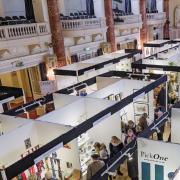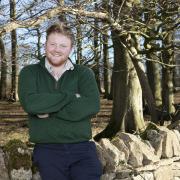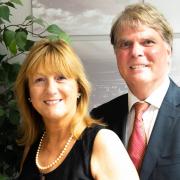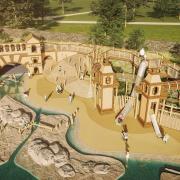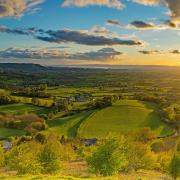Two of Oxfordshire’s major business parks are undergoing a revolution as they bid to attract the best modern companies, according to a major survey
30 years ago Oxfordshire's businesses were based in Oxford city centre and the county town centres. Since the 1980s business parks have been the solution for modern occupiers wanting larger, more efficient space outside of city centers, however these are often criticised as being somewhat sterile environments.
The VSL annual Oxfordshire commercial property report focuses on two key employment hubs, Milton Park and Oxford Business Park which are home to more than 150 businesses employing almost 15,000 people. Both are evolving rapidly with major ongoing investment in a bid to attract thriving companies looking for an environment in which to grow.
Business park owners and investors are now working hard to reinvigorate, transform and adapt the offering to meet the needs of modern occupiers.
The report suggests there are five ways in which these parks are adapting.
1. Customer relationship - business parks are moving away from the traditional landlord and tenant relationship, providing flexible leasing solutions which reflect the needs of their customers.
2. Designing new space and adapting existing buildings - to meet the needs of new occupiers working in the burgeoning Oxfordshire science and tech sector.
3. Onsite amenities - both sites are investing in facilities and amenities such as restaurants and leisure activities with spaces developed for informal meetings and social events.
4. Transport - transport is also a mutual key theme with considerable planning dedicated to providing the most efficient methods including buses, car sharing schemes and cycle routes.
5. Communities - most importantly both see themselves as communities, not only dedicated to serving the continually evolving needs of their customers but providing the types of work environment that is demanded by the young skilled labor force.
At Oxford Business Park new community hubs are being created. Firstly, in partnership with the Jam Factory, the "Oxford Factory" is being developed at the heart of the Park, which nods to the heritage of the car plant which previously occupied the site. The Factory will provide a 100 cover contemporary restaurant and is due for completion in November 2019.
The second hub the "Oxford Works", will offer a flexible working environment where customers can hire desk space for short periods from an hour upwards. The Park Management Team will be based at the Works, which will also provide space for community services such as yoga and languages classes and a 100 person seminar theatre.
To the south of the Park will be the "Market Place" which will be completed this month. An outdoor social space to grab a coffee, relax amongst the trees and enjoy a game of table tennis.
Dan Williams, development director at Arlington explains: "It's not just about physical amenities but also ensuring that we provide a variety of services that positively improves the balance in our busy working week, blurring what had previously been referred to as the work/life divide and creating an environment that stimulates interaction amongst colleagues and other businesses to drive collaboration which is at the heart of any innovative community."
At Milton Park they have created a 2040 Vision programme looking at key themes including connectivity and transport while the environment and growth of facilities are also high on the agenda.
Philip Campbell, commercial director of Park owners MEPC, said: "It's not about Milton Park creating a 'development plan' but rather a shared vision that all stakeholders can support, help deliver and own. The aim is to ensure Milton Park continues to be sustainable for the businesses that are here, the people who work for them within the local community and for investors.
"We need to build on what we already have at Milton Park and improve the sense of place. Networking, community and engagement are all central to that."
This research forms part of the VSL Intel annual report, which provides an analysis of the office and industrial market focusing on central Oxford and the A34 'Innovation Knowledge Corridor' for offices from 3,000 sq ft and above and industrial from 5,000 sq ft and above.
The VSL Intel report shows that once again, market activity has been dominated by the 'science and technology' sector.
Richard Venables, director at VSL says: "The most striking change is the amount of space taken up by the science and technology sector in the industrial sector which has increased from 23% in 2017 (266,000 sq ft) to 65% in 2018 (486,000 sq ft). In the office sector this has remained steady at around 65%.
"Many of the technology spin out company's desire to stay in the centre of Oxford for access to University departments and employees. We are now finding that they are prepared to look further afield to the ring road and beyond. Ultimately this is dictated by the fact that there simply isn't the stock available in the centre of Oxford and any new schemes are still some years away."
To view the report, visit adobe.ly/2Wue0U2 or to speak to one of the VSL experts, please call 01865 848488 or visit vslandp.com.








